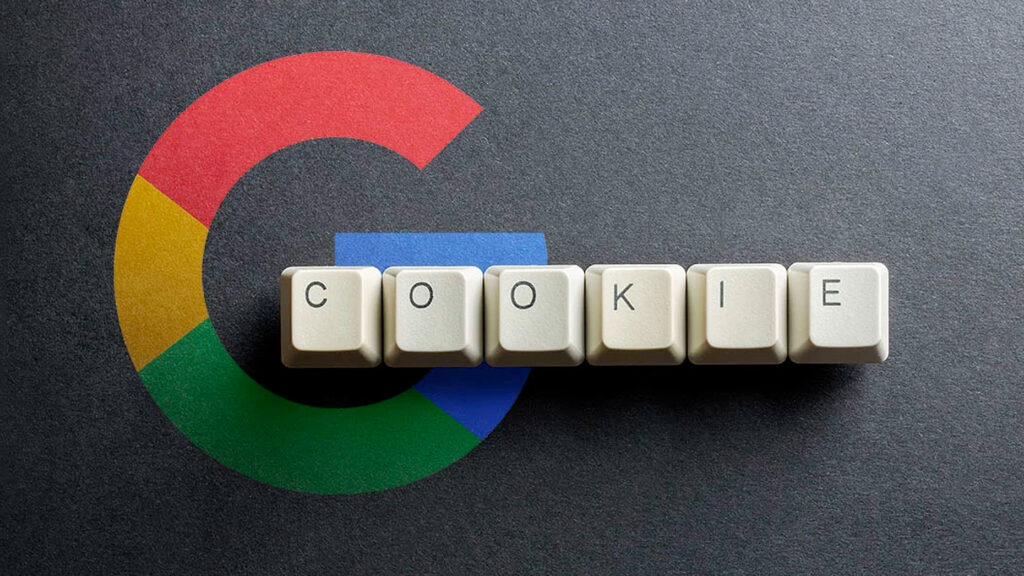Many experts claim the advertising technology (AdTech) industry is literally facing an identity crisis – one that is fraught with the epic challenge of replacing third-party cookies with a tested identity resolution solution capable of providing a formidable workaround with similar cookie-like results.
Yes, there is undeniable truth to such claims, but what’s become even more apparent is the AdTech industry is truly facing a communication crisis.
Can suitable cookie workarounds be proven and universally adopted? It truly remains to be seen, but there sure is a lot of industry-wide activity aiming to achieve this monumental task. What’s certain is this is an evolutionary opportunity for the industry to build better, more reliable, privacy-compliant targeting and measurement solutions. Without question, that’s been the primary focus to date, and rightfully so.
However, an unfortunate byproduct of this effort has been the proliferation of collective, convoluted confusion shared by many – mainly those on brand side trying to figure it all out and stay abreast of the innovation. What’s lacking important focus is the industry opportunity to create truly unified clarity, which many brands grappling with the inevitable cookie crumble can’t claim.
An AdAge study recently revealed 67% of marketers surveyed claim they feel a combination of being “overwhelmed, helpless and even confused” over making sense of cookieless tracking to understanding the benefits and value of identity resolution solutions.
![]() “67% of marketers surveyed claim they feel a combination of being “overwhelmed, helpless and even confused” over making sense of cookieless tracking.”
“67% of marketers surveyed claim they feel a combination of being “overwhelmed, helpless and even confused” over making sense of cookieless tracking.”
This is where the broader industry has fallen short in effort, unfortunately. Until something does happen by way of offering up an acceptable third-party cookie alternative and a transparent, digestible explanation as to how it works, confusion will continue to abound for brands looking for the best path forward to effectively advertise their products and services and measure results accordingly.
Best Path Forward

So, what’s that best path forward for brands looking to better understand what this all means, to prioritize and then onboard an identity resolution strategy? And how should brands best make sense of all of these complex initiatives dramatically impacting the way in which they advertise?
What makes this even more challenging for brands navigating this complicated subject area is the multiple technologies offering up their own cookieless tracking solutions on the matter. How do you determine what’s the best partner for your specific marketing needs, especially when each possesses its own core competencies and competitive differentiators?
At last count, more than 20 AdTech vendors are currently testing technologies designed to supplant third-party cookies, along with 80 technologies providing identity resolution capabilities altogether, according to AdExchanger. All of this means that there are 80 technologies with 80 different ideas on how identity resolution should be conducted.
This industry has become over-saturated with proliferating theory with little to nothing to show for it outside of controlled testing application.
For instance, Google launched its Privacy Sandbox, the Federated Learning of Cohorts (FLoC) application, which uses its deep learning capabilities to build cohorts based on behavioral propensities of internet users. This essentially groups users into cohorts based upon these shared behaviors and interests.
The Trade Desk’s Unified ID 2.0 initiative leverages a user’s anonymized email which is extrapolated from a user logging into a website or app. When a user enters an email into a website, an identifier is generated based on a hashed version of that email. The consumer then controls preferences on how their data is used.
LiveRamp’s Authenticated Traffic Source, TapAd’s Switchboard, and Neustar’s Fabrick Identity Ecosystem all are working on alignments to create shared cookieless identity solutions by partnering with publishers in the effort to keep the internet open while keeping the privacy of the consumer and the interest of publishers and advertisers at heart.

Complicating things further, customer data platforms (CDPs) and demand-side platforms, alike, are creating their own identity graphs and integrating this technology into their broader service offerings, pushing ID solution-first platforms to further innovate and separate themselves from the swelling pack of providers.
This is actually a good thing, but it also exacerbates market confusion and misconception. So, where does this leave the brands trying to make sense of all this, let alone in trying to keep up with all of the repeated news surrounding innovations? More confused?
Helping to Make Sense of Identity Resolution Data
Blast is helping to clear the air of confusion. We’re supporting and strategically guiding our brand partners through the complicated, confusing maze of identity and orchestrating identity roadmaps capable of driving end-to-end processes from technology evaluation to full implementation and execution. The underlying value here is Blast’s deep knowledge and connections within the identity resolution space.
In other words, Blast can help make sense of it all – providing better clarity, while aligning the right technologies to meet specific needs.
In fact, Blast recently hosted a “Blast Chat” on the topic of identity resolution, with partner Neustar joining the discussion, and broached this very subject. Watch the video recording of this engaging identity resolution conversation on YouTube.
Devon DeBlasioDevon, product marketing director of Neustar-Fabrick – Neustar’s Identity Data Ecosystem – shared his thoughts on the matter as a guest contributor, agreeing it’s a complex subject area for brands to comprehend.
He believes brands need to be vigilant about being informed and seeking a source of truth, and that means asking questions and aligning with a partner that can tell you what they do know and what they don’t know.
The critical foundation of understanding all of this is that it all starts with a single view of the customer. That’s the objective. But identity resolution is complicated. As the number of touchpoints increases, the more complicated a customer profile becomes and the more challenging it is to create an authentic customer experience.
So, What Do Brands Really Need to Know About Cookieless Tracking?
Just in the past year, much has been opined, debated, and theorized over the great cookie conundrum, which has perplexed the advertising technology universe to near paralysis. With third-party cookies being eliminated and mobile IDs (MAIDS) being abolished, the landscape of digital advertising is being forced to evolve. For certain, there’s no one solution technology that can recreate the cookie or MAID. This new landscape will be much more challenged across attribution, media buying, and measurement – all of which will be dependent upon the effectiveness of the technology.
For the sake of consumer privacy, both Apple and Google have committed to no longer support third-party cookies. The outcome of the cookie disposal, as previously stated, is that the space is being flooded with new identity solutions, most of which are based on email addresses. This paradoxically drips with irony. The third-party cookie is totally stripped of personally identifiable information (PII) and can be simply governed by the user in the browser settings, while the proposed workaround is using a hashed email created from user information without the knowledge of the user.
At its core, identity resolution can be a powerful solution, driving much more accurate outcomes from media buying to omni-channel attribution. And these are magnified when you select the right partner to work side-by-side with you on your quest for a single customer view. It’s important to understand that identity impacts every component of the media initiative process, from prospecting and retargeting to creative personalization, data and measurement. On the demand side of the programmatic exchange process, ad networks have been working to create proprietary solutions for cookieless tracking, and significant progress is being made to activate these identifiers across the buying platforms.
While third-party cookies may be disappearing, it’s critical to understand that there will never be a truly “cookieless world.” All major browsers are only removing third-party cookies, but first-party cookies will remain as an important aspect of data collection for publishers. First-party cookies are employed by publishers when a customer comes to a website, which allows for the creation of a more personalized customer experience. For instance, first-party cookies allow for a shopping cart to remain filled when a user exits and then returns to a website. Conversely, customers interact indirectly with third-party cookies, as the relationship exists between the domain and these third-party cookie providers.
First Party Data – A Brand’s Most Valued Asset

If proprietary first-party data is not considered as a brand’s most valued commodity, it needs to be. Beyond striving for identity clarity, the most significant priority that brands need to be focusing on right now to prepare for the future of identity is getting their first-party data in order.
Maximizing first-party data to its fullest potential should be a primary strategy for brands. Investing in a customer data platform improves the ability to aggregate and augment first-party data in a meaningful way with multiple use case scenarios – especially media activation, where data is pushed from a CDP into an identity resolution solution to anonymize data – required by privacy restrictions – before being piped to demand-side platforms.
At its core, identity resolution can be a powerful solution, driving much more accurate outcomes from media buying to omni-channel attribution.
While first-party data is a potential critical foundation for all well-designed digital campaigns, a more advanced use case is now being used by way of new identity solutions like clean rooms.
Clean rooms, while not new from a data analysis standpoint, are becoming a favorable way to glean and extrapolate meaningful insights from first-party data by integrating it with data from another source – mainly the closed-ecosystems or Walled Gardens – such as Facebook, Google, LinkedIn, and others. In these highly secure environments, data can be analyzed to discover advertising insights without any personal data being compromised or digested from the safety of the closed system. There are multiple clean room use cases for advertisers.
Clean rooms give advertisers the opportunity to create custom audiences that can be directly pushed back into the platform to optimize advertising targeting. Creating such audiences using deeper insights from advertising data, while layering first-party data, creates substantial optimization opportunities not afforded outside of these environments.
So, ultimately data clean rooms drive deeper and more advanced analysis. Brands seeking in detailed attribution, customer lifetime value, audience segmentation, and ultimately a clearer, more cogent understanding of their customers and advertising optimization opportunities will greatly benefit from clean room technology.
As the advertising technology industry moves forward, solving for identity, especially in a time when so many personal identifiers can be connected to a single consumer, needs to be a priority of every brand focused on people-based marketing. Those that understand the value of identity resolution and leverage it in a meaningful way as the core component for full-funnel marketing activities will yield greater customer experiences and overall return on investment.
Identity needs to be the backbone of any brand striving to drive personalized experiences by activating data to learn, optimize, and most importantly build customer experiences and relationships. It’s imperative that marketing initiatives have identity as its core to truly understand their customers as people who have multiple identity attributes. When a formattable baseline of identity is in place, all marketing executions become better managed, more effective, drive intended outcomes, generate brand loyalty and lengthen the lifetime of the customer.
In the world of 24/7-connected consumers engaging with several devices all within a highly competitive marketplace, brands can no longer procrastinate waiting for the industry to find the right solutions. So when it comes to identity adoption, it’s not a matter of if, but when – and that time is now.
In the world of 24/7-connected consumers engaging with several devices all within a highly competitive marketplace, brands can no longer procrastinate waiting for the industry to find the right solutions.
Brands can’t cut through all of this confusion and do this alone. BlastX can help you navigate this complex, complicated subject matter and purposely position your brand to understand identity and integrate it as a core marketing pillar to optimize your digital customer experience and drive desired business outcomes.

